
Traveling at the Speed of Lightness
An exploration into nature and its relationship to the body, mind and spirit of man…
Dr. Gregory T. Lawton
May, 2013
the Speed of Lightness 2 An exploration into nature and its relationship to the body, mind and spirit of man. Traveling at the Speed of Lightness, Copyright 2013 Dr. Gregory T. Lawton All rights reserved. No part of this book shall be reproduced, stored in a retrieval system, or transmitted by any means, electronic, mechanical, photocopying, recording or otherwise, without written permission from Dr. Gregory T. Lawton. American Health Source, Inc 2040 Raybrook SE, Suite 104 Grand Rapids, Michigan 49546 888-375-7245 Writing, Photography and Book Design – Dr. Gregory T. Lawton Editors, Steve Koziolek and Matt Muschiana
Traveling at
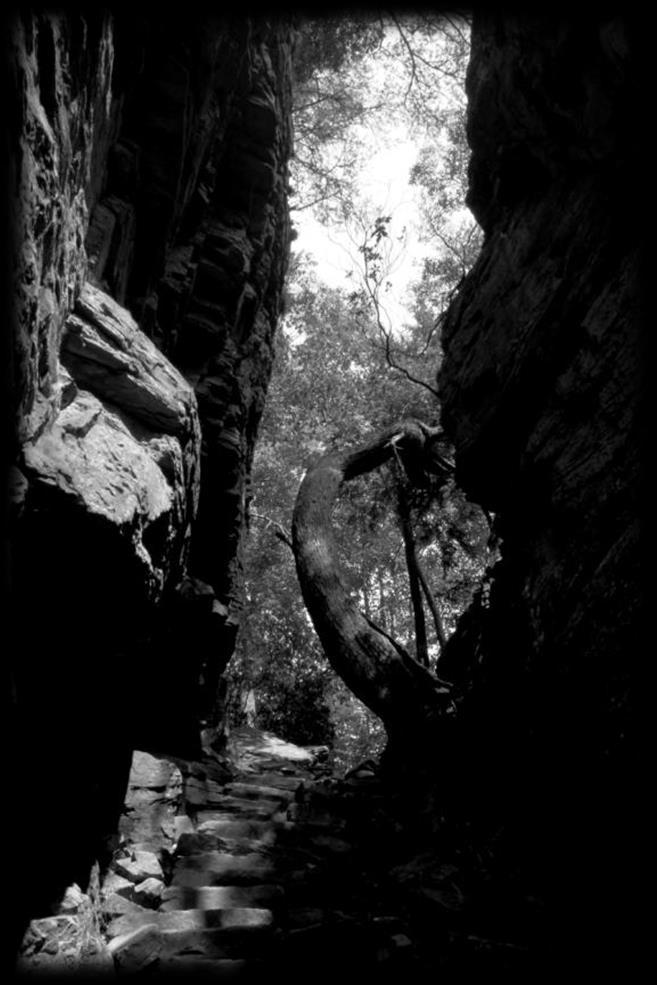
Dedication
I am dedicating this book to my grandchildren Ajay, Alex, and Alyssa in the hope that they may walk further down these paths than I have…
the Speed of Lightness 3
Traveling at
An exploration into nature and its relationship to the body, mind and spirit of man.

Preface
This material, and the story within it, was written for personal trainers, martial artists, holistic health practitioners, and anyone interested in the union of training body, mind, and spirit through adventure fitness and cross training. I have written about these topics before and in previous books and articles including my philosophical work entitled Scent of a Forgotten Flower and my instructional books on the martial arts which include; Tai Chi Chuan, A Students Lessons, A Students Journey through the Martial Arts, Pakua Chang, the Path of the Eight Diagram Change, and The Song of the Flowing River Hsing Yi Chuan.
These previous books were written primarily for my martial art students while the material in this booklet is directed at a broader audience. The material in this booklet is categorized into two parts; part one investigates the philosophical and spiritual dimensions of a holistic approach to the art and science of adventure fitness and cross training in the natural environment and part two discusses the practical aspects, needs, and preparations for entering the natural environment for the purpose of training the body, mind and spirit.
An exploration into nature and its relationship to the body, mind and spirit of man.
Traveling at the Speed of Lightness 4
Introduction
I have watched with keen interest the evolving growth and development of the exercise sciences over the last decade and I have witnessed them transforming into both arts and sciences that reflect many of the concepts, values, and philosophy that I have personally studied, learned and practiced over the last forty to fifty years. I have been fortunate and indeed blessed in my life to have been introduced to exercise, martial arts, and training in the natural environment and outdoors at an early age. It is just plain luck that as a young man I listened to my “elders” and actually dedicated myself to this training and that I personally persevered through decades of study and conditioning related to the art and science of exercise and the martial arts
My early teachers in yoga and the martial arts of Kosho Ryu Kenpo Jujitsu, Judo, Boxing, wrestling, Tai Kwon Do, Hap Do Sool, Shorin Ryu, Aikido, Kendo, Tai Chi Chuan, Dao Yin, Chi Kung, Pakua Chang, and Hsing Yi Chuan inculcated within me a holistic philosophy and approach to the art and science of exercise.
Holism is based upon the philosophy and ideals that to only train to strengthen the body is to train a corpse - and that it is essential to balance physical training, with mental health and wellness, along with attention to the development of the virtues and attributes of the human soul. This constitutes a holistic approach to the art and science of “exercise” and training of the body, mind, and spirit.
Had I solely focused my training on conditioning my body, as many do, I probably would have stopped training many years ago and joined the masses of aging Americans who are grossly unhealthy, obese, and who suffer from a pandemic of degenerative diseases. Statistics indicate that eight-six percent of Americans who start an exercise training program, quit within one year. Only ten percent of Americans engage in meaningful regular exercise and of this group less than two percent dedicate themselves to consistent long term training and sports activities.
This is a tragic state of affairs since exercise is arguably the single most important factor in maintaining health and wellness. But of these three components of the human being; body, mind and spirit – I would personally choose spirit as the most vital element to health, but of course it is difficult to be spiritual in a diseased body, with a sad and depressed mind.
Exercise is a vital and essential component of human health and wellbeing and in order to motivate a long term and meaningful dedication to the discipline of exercise it is important to inculcate within our students, clients, and patients a lasting sense of purpose.
Dr. Gregory T. Lawton
Traveling at the Speed of Lightness
An exploration into nature and its relationship to the body, mind and spirit of man.
Traveling at the Speed of Lightness 5
Traveling at the Speed of Lightness
Table of Contents
Dedication, Page 3
Preface, Page 4
Introduction, Page 5
Traveling at the Speed of Lightness, Page 7
Part One – Page 8
Setting Out on Our Journey, The Mystic Path, Page 9
I Dreamed You a River, Page 11
Tai Chi at Horseshoe Lake, Page 12
Part Two - Page 15
The “Trip Formula”, Practical Feet, Page 16
o Length of the trip, Page 17
o Difficulty of the terrain and environment, Page 17
o Characteristics and intrinsic resources of the area, Page 17
o Level of acceptable risk and safety, Page 17
o Number of hikers, Page 17
o Objectives of the trip, Page 18
o Personal satisfaction and enjoyment, Page 18
Preparing for Your Journey, Page 18
o Summer gear, Page 20
o Food, Page 22
o Clothing, Page 23
o Additional needs for the martial artist, Page 24
Part Three - Page 25
The Spirit of Adventure, Page 26
o Step One, Initial planning, Page 26
o Step Two, Laying out the adventure fitness activity, Page 28
o Step Three, More Practical Aspects – Handouts, legal forms and paperwork, Page 31
Other related books by this author, Page 39 Back Cover, Page 40
6
exploration into nature and its relationship to the body, mind and spirit of man.
An
Traveling at the Speed of Lightness

Traveling at the Speed of “Lightness”
I want my feet to drum on the desert floor, I want to hear the song the river sings, I want to feel the wind push me down the trail, I want to rub the back of a mountain side, I want to feel the warmth of a summer sun, I want to see the light dance across the waves, - and travel at the speed of lightness…
Dr. Gregory T. Lawton
“He walks the mystical path with practical feet.” David Starr Jordan on describing Abdul-Baha
This is about my two passions, nature and the martial arts, and how I have combined the two into a unique form of “cross training” for the last 45 years. I approach nature and training in nature with a gentle philosophy and a spirituality that is born of the awareness that God is reflected in nature and is discovered in the diligent study of, and emersion in, the natural environment around us. These passions of mine, nature and the martial arts, have led me to the solace of beautiful places and priceless personal experiences and insights. As a frequent traveler along the road less traveled I have learned to travel light, go remote, and to leave no trace behind.
Looking back forty to fifty years I was alone on my solitary journeys and explorations but now I see that not only have many like minded explorers and lovers of nature caught up with me on these paths, but they have also passed me… I wish them one and all, god speed.
An exploration into nature and its relationship to the body, mind and spirit of man.
7
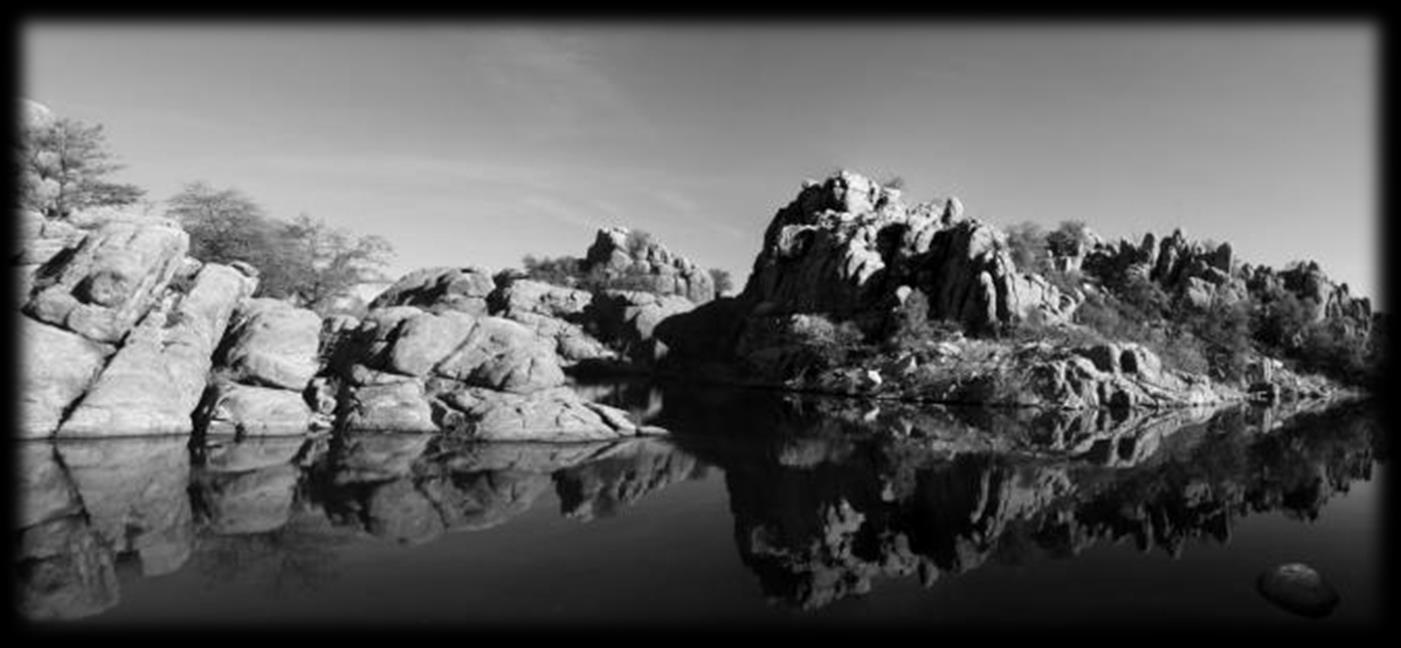
Part One, Setting Out on Our Journey, The Mystic Path
In Part One we investigate the philosophical and spiritual dimensions of a holistic approach to the art and science of adventure fitness and cross training in the natural environment
An exploration into nature and its relationship to the body, mind and spirit of man.
Traveling at the Speed of Lightness 8
Part One, Setting Out on Our Journey, the Mystic Path
Let’s begin in the desert. From the first moment that I saw the desert, “I got it”. I understood the subtle life that permeated every pore and every rock and crevice. I witnessed the hidden life within the desert and its latent pregnancy bursting with life and the evidences of water at every level. In short, I fell in love with the desert and I had to go there - or die for the thirst of it

The Desert Garden
I love the gold of the desert garden and the silver glint on the raven’s wing. I wander lost in the desert of Thy love and follow the fragrance of the desert rose. You’re trespassing on a heart that’s cold and left me “athirst in love's desert.”
It was you that made this desert a garden and this dusty stone a ruby red beating heart. If it weren’t for the beauty of the desert rose I would never sing a line of prose.
If it weren’t for the light upon your face there would be no warmth or love, a trace. I love the gold of the desert garden and the silver glint on the raven’s wing.
“Abandon not the everlasting beauty for a beauty that must die, and set not your affections on this mortal world of dust.”
Abandon not the everlasting beauty, abandon not, abandon not… Dr. Gregory T. Lawton with quotes from the Baha’i Writings of Baha’u’llah
In the early 1970s the area around Apache Junction became my playground but I especially loved hiking, camping and martial art training around Fish Creek Hill along the Apache Trail. Further down the Apache Trail and east of Tortilla Flats where the road drops down a few hundred feet and makes a sharp hairpin turn there is a beautiful shaded area along a wash where there is a grove of Cottonwood trees that is a perfect place to practice Tai Chi Chuan
To travel to the many difficult to reach, remote, but breathtakingly beautiful locations in Arizona I bought a 275cc off road Honda motorcycle with a high pipe that I used to take me deep up into desert washes in the summer and to position me for long day hikes across the desert floor. Here you can share the desert with jackrabbits, linx, mountain lion, coyote, mule deer, and javelina. On several occasions one or more of these animals visited me while I was practicing my Tai Chi Chuan form in the desert. On one hiking trip into the Grand
An exploration into nature and its relationship to the body, mind and spirit of man.
Traveling at the Speed of Lightness 9
Traveling at the Speed of Lightness
Canyon and not far from the Bright Angel trail a mountain lion approached me as I was doing Tai Chi Chuan under the moonlight and roared at me. As that lion’s roar moved through me like I was rice paper in the wind I learned about the power of sound and the kiai which is the battle cry used in some forms of martial art. I will never forget the kiai lesson of the lion.
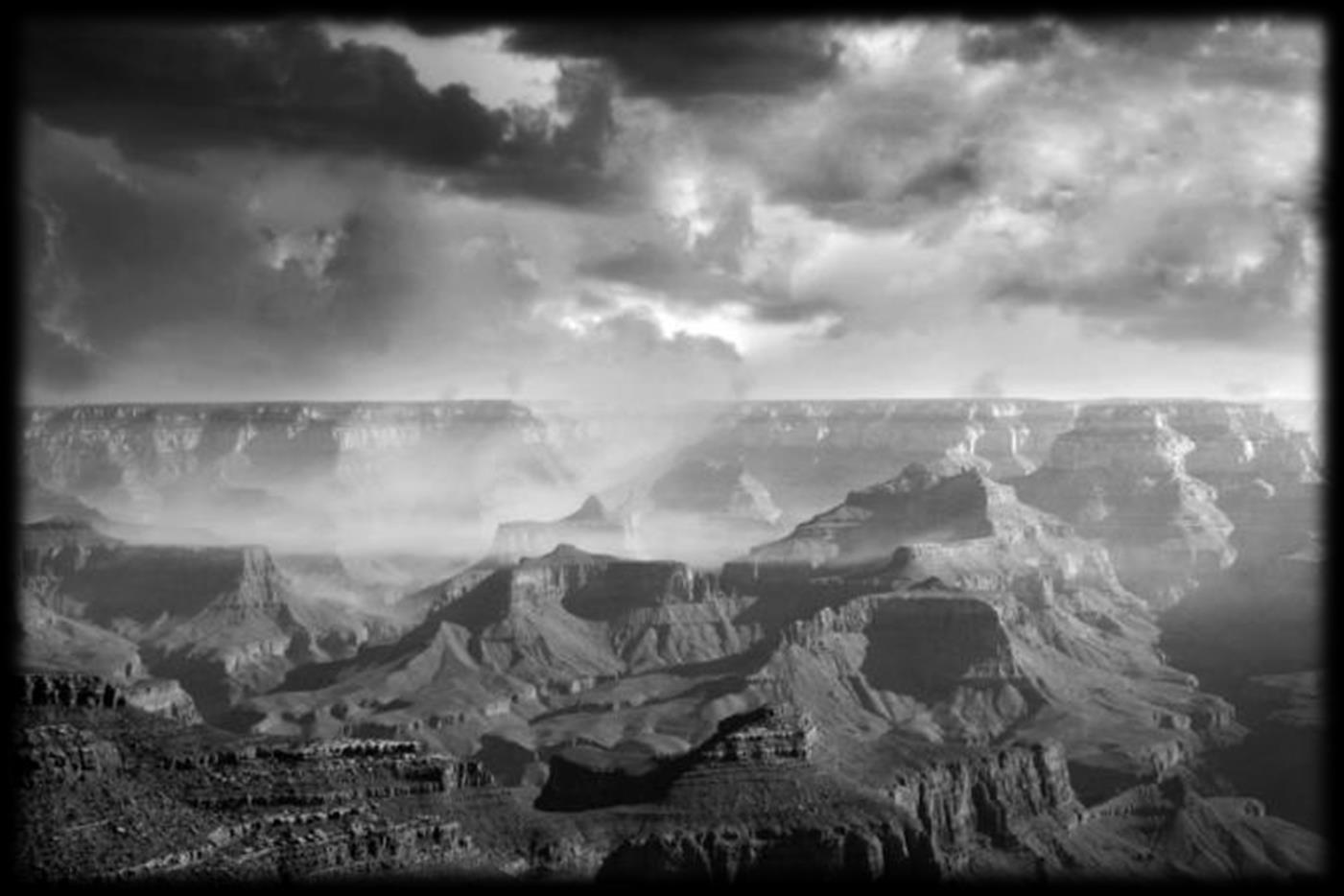
The Grand Canyon in the Morning
Of the many hiking and camping trip adventures that I could share with you I would like to share one of my journeys along and within the rivers and streams of Minnesota, the Land of 10,000 Lakes. I have a love affair with water and the places in nature that have been shaped by water. In this regard, Minnesota is a water paradise. In 1970, and while still living in Mesa, Arizona, I began to train in the little known (at that time in the U.S.) sport of free diving. At this same time I was training in Kosho Ryu Kenpo Jujitsu and I was very interested in eastern philosophy and meditation and I recognized the discipline of free diving as a compliment to my training in meditation and mental focus. My first free diving training began in a swimming pool and then expanded to the Pacific Ocean off the coast of California and later the waters around the islands of Hawaii and then off of the Florida Keys. I have never liked motorized boats or their gas or diesel fumes so I rather naturally began to combine solo distance swimming with free diving. I say naturally, because I traveled to my free diving destinations by swimming to them and in many cases this involved swimming from the shore out several miles
An exploration into nature and its relationship to the body, mind and spirit of man.
10
into the ocean. For anyone interested in ocean distance swimming and free diving I recommend that you do not swim or dive around the mouths of rivers and streams because these areas attract sharks.
When I lived in Duluth, Minnesota I was afforded many opportunities to hike up and down the coastal shoreline of the great Lake Superior. Lake Superior can be a very dangerous body of water and the average water temperature is about 40 degrees. I did not find Lake Superior to be all that inviting as an area for free diving, because the deeper you go down into the water the colder the water temperature is. So I began hiking and exploring the many rivers and streams that entered Lake Superior from the eastern boundary of Minnesota. Many of these rivers and streams form waterfalls and cascades that rapidly drop from the shoreline cliffs to the shores of Lake Superior and these waterways make an excellent “playground” for a free diver and swimmer.
The standard gear for a free diver and swimmer is a full body wet suit of appropriate thickness for the water and air temperatures, fins, a mask, and perhaps a snorkel. I soon discovered that hundreds of feet of nylon rope became very helpful in turbulent white water. I began my explorations of these rivers, streams, cascades and waterfalls by hiking up their shoreline trails. I then started to swim and dive in the cascades and under the waterfalls. Some of the white water entering up to the waterfalls was so turbulent that I could not swim up it so I devised a plan for white water swimming. I began to hike up above the waterfalls with several hundred feet of nylon rope. I tied one end of the rope to a tree along the shoreline and the other end to an empty and sealed one gallon milk jug. I would throw the milk jug into the river and then walk back down below the waterfall to find it. Once I had the rope I used it to pull myself up the white water and to the waterfall I spent many afternoons swimming in white water, cascades, and at the foot of waterfalls and then soaking up the sun on flat rocks surrounded by rushing water. The following poem is from my book of poetry and photography entitled, “Translated from a Foreign Tongue”.
I DREAMED YOU A RIVER
I dreamed you a river flowing through my heart. Within your bends and turns I felt the depth of you.
I heard a joyous sound sung in a language called love. Within your currents and eddies I was pulled to you.
I see the diamond sunlight dancing on your skin. Within your sparkling lights I am one with you.
You are a river called love and may you flow, and may I be pulled, and may we dance and be as one, within this heart forever.
I dreamed you a river flowing through my heart.
An exploration into nature and its relationship to the body, mind and spirit of man.
Traveling at the Speed of Lightness 11

My adventures in water continued to evolve as a natural expression of my curiosity and so I also began to swim long distances up rivers, around the shores of lakes, and into and through swamps. My favorite time to swim up these waterways was in the early morning just before sunrise or late at night during the full moon. I learned the hard way to wear wet suits thick enough to resist mosquito bites and I made a makeshift waterproof swimming backpack out of a dry bag and nylon cord. I also traveled up these waterways with a waterproof camera. I learned that fish in fresh water rivers and lakes are not afraid of an underwater swimmer just as salt water fish are not afraid of divers in the ocean. I have experienced the magic of swimming in rivers and lakes beside river otters and deer, and from the deer I learned a new kick for swimming.
So, how do I physically, mentally, and spiritually relate these experiences to my training in the martial arts? Tai Chi Chuan is a form of moving meditation (swimming on dry land) and I approach the wilderness as a meditative experience and I move within it in the same manner that I perform Tai Chi Chuan. When hiking in the desert across rugged terrain and in the stifling 110 degree plus heat of summer I move slowly and conserve my energy for the long trail ahead. When training in the wilderness and I am graced by the beauty, power, and presence of curious animals I feel a deep connected oneness with them. Swimming out into the ocean and diving into its depths requires deep meditative preparation, mental focus, and breath control that is equal to or greater than that experienced in yoga, Tai Chi Chuan or Dao Yin. All of this requires a fearlessness and spontaneous creativity and playfulness that epitomizes the highest levels of martial art training. Finally, the natural world, while we are at play in the gardens of God, serves as a metaphor of life that symbolizes our physical, mental, and spiritual journey.
The following story was included in my book, “A Students Journey through the Martial Arts” and I believe that this story, which describes a bicycle camping trip into northern Michigan, is an example of how lessons are learned through carrying our martial art philosophy of peace and unity into nature, and how nature in turn can reflect that peace and unity back to our hearts and souls.
Tai Chi at Horseshoe Lake
The trip was billed as the last ride of the “summer” but the trip got delayed, delayed and delayed until early October. Cold weather had set in early that year but we were hoping for a few Indian summer days. The three of us were on a bicycle camping trip in northern Michigan. The route that we planned had us ditching the car in Gaylord and following off road hiking trails into and through the northeastern corner of Otsego County, Michigan.
An exploration into nature and its relationship to the body, mind and spirit of man.
Traveling at the Speed of Lightness 12
Almost immediately we got off to a bad start. Our heavily loaded bikes outfitted with front and back panniers stuffed with tents, sleeping bags, cooking gear, food for several days, clothes, and every other convenience that we could possibly fit into the panniers, or somewhere strapped on the bike, quickly bogged down on back country trails that were mostly deep loose sand. Ninety year old geriatrics could have easily outpaced us as we agonized with each labored turn of the pedals. To add insult to injury (literally) the temperatures dropped drastically, it began to sleet, and we pedaled into a relentless head wind. This was not exactly the idyllic Indian summer trip we had visualized.
Because of the laborious pedaling and the nasty cold wet weather we threw our meticulously planned schedule, directions, and map away and began to “wing” it. When one of our companions broke down mid-afternoon and began to cry we started thinking about setting up camp and giving the weather a chance to improve. We also needed to find a route that was not through sand.
As luck would have it we ventured upon a remote “rustic” campsite and quickly began to unload the bikes and set up our tents and camping gear. The weather began to improve and we momentarily saw the sun peering between the clouds. As the weather improved so did our perspective. Unfortunately, this condition did not last long as a long line of Harley motorcycles began rumbling into the campgrounds. It appears that we had set up camp in the middle of a motorcycle club camping trip. Within minutes of their arrival the heavy metal music began blaring.
I decided to hike deeper into the woods and to set up my tent as far from the “biker” clamor as possible which did serve to tone down the heavy metal volume a few decibels. Once again, unfortunately, I had picked an area where the bikers decided to hold target practice with their hand guns.
After a sleepless night punctuated by raucous yelling, music, the sounds of breaking booze bottles, and gun shots the morning could not have come early enough and we got on the trail at first light determined to leave the campground and the bikers as far behind us as possible. This is how we finally ended up at Horseshoe Lake.
Horseshoe Lake is a small lake hidden away off of dirt roads and deep in the woods. The lake is, of course, shaped like a horseshoe. The lake is surrounded by pine trees, moraines, elk and deer tracks, friendly trails leading to beautiful meadows and one very impressive sinkhole. But most importantly we had the lake to ourselves, and it was quiet. Once again we unpacked and set up camp. We were so numb from the weather and the biker “festival”, that after a brutal first day and a sleepless night we fell asleep almost immediately after supper.
I woke up before dawn in the twilight space before the first glimmers of sunrise. The only sound was the quiet of the ending night and the snoring of one of my companions. I stepped out of my tent and immediately felt the early morning chill. On impulse I decided to practice Tai Chi Chuan by the lake and walked a few yards to the water’s edge. Once reaching the shoreline I chose to wade into the water and practice my morning Tai Chi standing in the very cold water immersed up to my neck. The water was bone numbingly cold and soon I lost complete sensation (thinking, “Heck this is cold!”)
An exploration into nature and its relationship to the body, mind and spirit of man.
Traveling at the Speed of Lightness 13
Traveling at the Speed of Lightness
I began with Chi Kung practice and concentrated on increasing the blood flow into my skin, arms, and legs. Rather quickly I felt comfortably warm and I acclimated to the cold water and the chill of the air on my exposed head and neck. After achieving a level of relative comfort in the water I began to practice Tai Chi and was soon lost in the moving meditation of the Tai Chi form. I found that the cold water and the numbness that I felt helped me to “blend” into the environment.
This is how I greeted the sunrise. I watched the sky slowly brighten and the clouds turn into a pastel pallet of colors. I watched as the lake began to reflect the clouds and their colors like a perfect reflecting pond. The air, the water, the sky, the clouds, my body, mind and spirit all felt connected. Just when I didn’t think that this moment of unity with nature could be any more profound a troop of nine deer walked to the water’s edge and began to circle the lake. Now all of the elements were indeed perfect as the sky and clouds, the colors of the sunrise, the trees around the water’s edge, the deer and me were all reflected in the lake at the same moment. It was a stunning moment of unity and oneness.
I have published many of the insights that I have gained while training in the wilderness in a small book called, “Scent of a Forgotten Flower.”

14
An exploration into nature and its relationship to the body, mind and spirit of man.
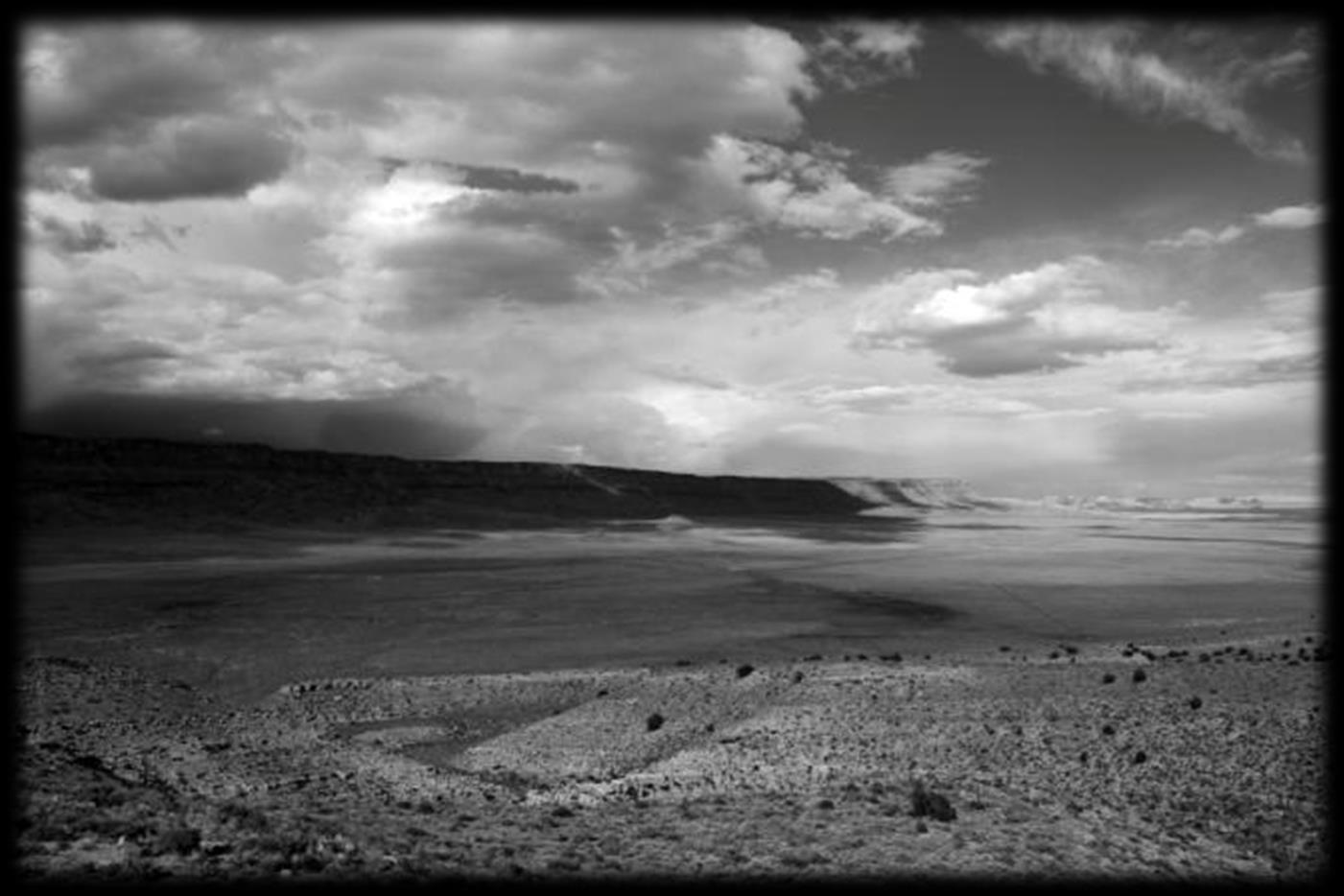
Part Two, The “Trip Formula”, Practical Feet
In Part Two we investigate the practical aspects, needs, and preparations for entering the natural environment for the purpose of training the body, mind and spirit.
An exploration into nature and its relationship to the body, mind and spirit of man.
Traveling at the Speed of Lightness 15
Traveling at the Speed of Lightness
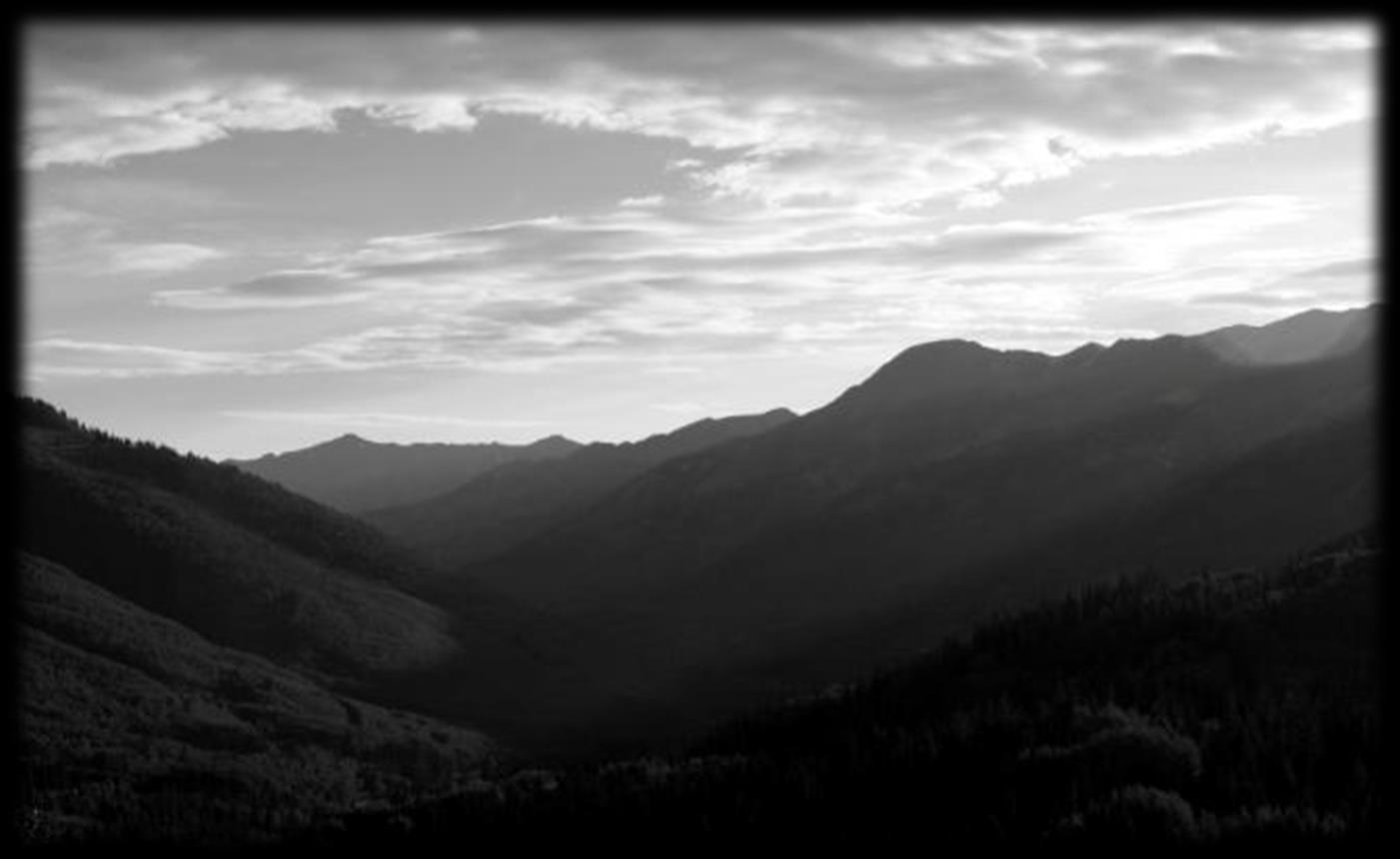
Part Two, The “Trip Formula”, Practical Feet
Since you can’t just walk out into the wilderness, you have to prepare, let’s look at the practical aspects of that preparation.
No matter how you choose to hit the trail during the warm summer months; by foot, by bike, or in a canoe or kayak, weight and space are two important considerations for any journey into wilderness or back country terrain. The further afield you travel the more critical are the decisions that you make as to what to pack into a backpack, pannier, or hatch. As a frequent traveler along the road less traveled I have learned to travel light, go remote, and to leave no trace behind. Some backpackers embrace the concept of light and ultra-light backpacking and strictly define these terms by weight with ultra-light backpacking being defined as a pack weight 5 pounds or less. I do not define “lightness” solely by weight and I do not meticulously measure every metric gram of gear that I plan on carrying into the field, I rather define “lightness” as a state of mind that balances the experience of backcountry solitude with rational necessity. I also employ a “Trip Formula” that combines these seven factors:
1. Length of the trip (days or weeks)
2. Difficulty of the terrain and environment
3. Characteristics and intrinsic resources of the area
4. Level of acceptable risk and safety
5. Number of hikers
An exploration into nature and its relationship to the body, mind and spirit of man.
16
6. Objectives of the trip
7. Personal satisfaction and enjoyment
Additionally, I try to physically and philosophically minimize the material elements of a journey and to maximize the spiritual and for the last forty years I have attempted to create a synthesis that combines nature and the beauty and peace of the natural environment with the philosophical and spiritual aspects of martial arts training.
Let’s revisit my “Trip Formula” and its seven point scale –
Length of the trip (days or weeks)
The length of the trip that you take, whether in days or weeks, is a determining factor regarding what gear, equipment and supplies you will have to pack and carry with you. If you are entering an area that is remote you will most likely have to carry everything with you that you need for your trip and of course you will have to carry out your gear, equipment, as well as, the supplies that you do not consume and your waste and trash.
Some trips may allow you to either cache supplies along your route in advance of your trip and/or to purchase additional gear, equipment, or supplies along the way.
Difficulty of the terrain and environment
The difficulty of the terrain and the natural environment that you will travel through is another factor in determining what gear, equipment, and supplies you will need. For example, the roughness of the terrain will affect your decision regarding what kind of shoes to wear, the projected weather forecast such as will it rain or will it be very hot or cold will affect your decisions regarding clothing choices. Additional needs and choices may center around the need for swimming or water gear and/or climbing gear, or even issues like whether you will be traveling at night and will therefore need additional or larger lights, batteries, or solar battery chargers.
Characteristics and intrinsic resources of the area
Some areas offer little in terms of natural resources that you can rely upon for food, shelter, or water and other areas offer abundant natural resources. In dry, hot desert terrain you need to carry most of your water in and you may not be able to rely upon natural water sources during periods of drought. If you are traveling around lakes, rivers, and streams, water availability is not a problem but you will need an effective water purification plan and equipment.
Level of acceptable risk and safety
One of the prime rules of backpacking and back country camping is that everyone remains safe and comes back unharmed and alive. You should not sacrifice safety for a minimalistic philosophy. The integrity of human safety and life is more important than a philosophic ideal. Take with you and carry with you what will make you and your companions safe.
An exploration into nature and its relationship to the body, mind and spirit of man.
Traveling at the Speed of Lightness 17
Number of hikers
The number of hikers on a trip is one of my factors in determining what needs to be packed and carried because a number of hikers can divide the responsibility for certain gear, equipment, and supplies. For example three hikers don’t all need to bring knives, and perhaps one knife will do, or maybe one three person tent instead of three separate tents. Create your gear, equipment, and supply list and meet with your trip partners to discuss and to divide up the packing and carrying responsibilities, then create individual packing checklists. When you meet, and before you hit the trail, recheck all gear, equipment, and supplies to make certain that everyone has brought the gear, equipment, and supplies that they are responsible for.
Objectives of the trip
How you define your personal objectives and goals for a trip is also a factor in determining what gear you need to take with you. If the purpose of a trip is to capture your adventure on video and/or photographs then you will need to carry photographic gear and equipment with you along with batteries and/or the ability to recharge your equipment. I am an independent professional photographer and so the cameras and lenses that I pack and carry might be larger and heavier than what a recreational photographer might choose in a small “point and shoot” camera. While I use high level image stabilized lenses that do not require a tripod, I might want to set up for low light or night shots that require a tripod.
I might also be hiking, biking, or kayaking into an area where I intend to boulder or rock climb and under this scenario I will need climbing gear and equipment, or I might be entering an area where I can free dive or swim and I will need a diving body suit, fins, and mask.
If, like me, your trips are multi-dimensional you will define your need for gear, equipment, and supplies based upon your trip objectives and goals.
Personal satisfaction and enjoyment
While personal satisfaction and enjoyment are last on my list they are first in my heart and mind. On the most basic level a trip should be satisfying and enjoyable, but more than that the experiences gained on the journey should be life changing and transformative.
Preparing for Your Journey
In the 1950s I first began to learn the art of camping from my father on family summer vacations around Hayward, Wisconsin and later after my discharge from the U.S. Army in 1968 I began to backpack and camp around Apache Junction, Arizona in the Superstition and Mazatazal mountain wilderness areas and in the area around Roosevelt Lake and Fish Creek Hill.
My first backpack, like much of my early camping gear, was handmade. I hand stitched my own backpack using cowhide and rawhide lacing. I used this pack for many years and until its bottom finally rotted away.
Traveling at the Speed of Lightness 18 An exploration into nature and its relationship to the body, mind and spirit of man.
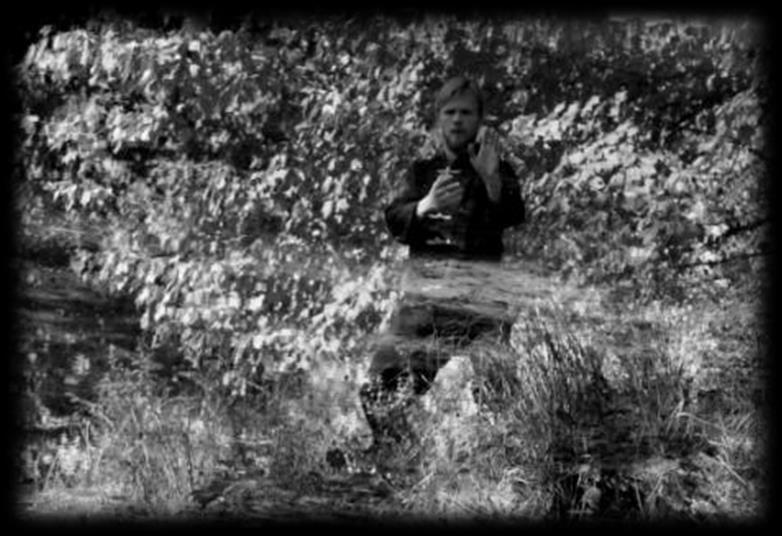
Dr. Lawton’s student Sean Butterworth practicing Tai Chi Chuan by a pond.
In 1971 on one ill fated four day hike by Weavers Needle and Black Top Mesa in the Superstition Mountains outside of Apache Junction, Arizona the 116 degree heat had me wishing that I could jettison everything that wasn’t either drinkable or edible. I cursed the unneeded changes of clothing and underwear, the D cell flashlight batteries, the macho but completely unnecessary camp hatchet, the cooking equipment and stove, the over sized bowie knife, the .22 caliber long barrel handgun on my belt (Yes, this was the Arizona desert after all), and even my large brass belt buckle. After that poorly planned trip and its hard lessons I vowed to embrace minimalism and the philosophy that “less is more”
After spending several years exploring the Arizona desert I escaped the burning summer sun and blistering heat and I relocated to Duluth, Minnesota where I began hiking, camping, and canoeing in the Boundary Waters area around Ely, Minnesota It was there that I learned to put my minimalist philosophy to the test in an entirely different environment. I had arrived in Minnesota in early May and it snowed in Duluth!
I often combine hiking with canoeing, kayaking and biking, or vice versa. Many people who travel by canoe often don’t think as much as they should about the weight of their gear, but they should. Even though the gear is lying on the floor of the canoe it is still weight and it has to be paddled across lakes, down rivers and streams, and sometimes through waves and storms – and of course there are the portages from one waterway to another. There is also the possibility that your canoe, kayak, or bike will be lost, stolen, or damaged and that you will have to hike out of an area. Be prepared for any and all possibilities.
On one seven day solo trip into the Boundary Waters I chose a route that required six portages running in length from an eighth of a mile to a full mile. This of course meant that I had to beach the canoe and carry it and all my gear on my shoulders and back to the next put in point. These portages and the weight on your back definitely make you think about all of the unnecessary gear you packed for the trip.
On the day that I went to get my rental canoe the Ely outfitter was surprised at how light my pack was and concerned at how little gear I was taking into the wilderness. I watched as the outfitters staff loaded large
An exploration into nature and its relationship to the body, mind and spirit of man.
Traveling at the Speed of Lightness 19
Traveling at the Speed of Lightness
Duluth packs into heavy Grumman aluminum canoes. I was shocked to see packs loaded with canvas cooking tents, cast iron pots and pans, steaks, and beer - and no consideration at all for weight. My pack weighed less than thirty pounds and only carried what I viewed as the most important essentials. In addition I wore or carried a number of items on my web belt or in my cargo pants and shirt pockets.
More important than what you carry on you, is what you carry within you. I have a theory that no knowledge is ever lost, that would be like saying that the sun will stop shining. Knowledge is all around us and it is within us, it is simply waiting for us to discover it.
I wrote and published this in my book on Tai Chi Chuan philosophy entitled, “Scent of a Forgotten Flower”. “Listen! There is nothing to hear, and there are no secrets. It is all there for you. Sand on the beach. Light in the sky. Rain in the night.
It is there abundantly.
Why wear a blindfold to the sunrise!”
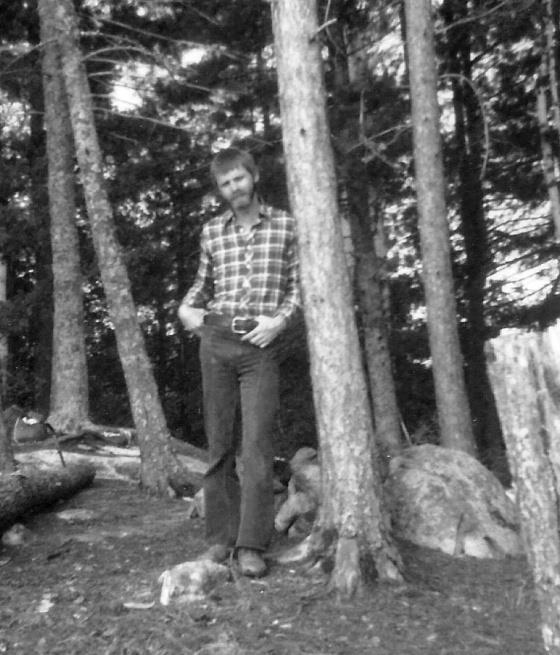

Author in the Boundary Waters 1977
Every season I repack my bag with the expectation that I will be taking a trip, even when I have no trip planned. I remember that a wise philosopher once said that when the enemy is at the gate and the city is burning, leave taking nothing with you. When it is time to leave I hope that I have a whittling knife in my pocket…
Here is a list of the gear in my pack today. My pack is always packed and ready to go.
Summer Gear -
Sierra Designs Flashlight tent (Sometimes I take a Grand Trunk hammock tent)
An exploration into nature and its relationship to the body, mind and spirit of man.
20
(Note backpack on left side of the photograph)
Traveling at the Speed of Lightness
Grand Trunk Sleep Sack sleeping bag liner
Ground pad
Water filter (Katadyn Micro Filter)
Swiss Army knife
Opinel folding knife (No. 12)
Water bottle
Plastic 2 gallon collapsible water container
Bug and mosquito lotion
Light mosquito netting (for mosquito and black fly season)
Water proof matches
Small flashlight/LED (2)
Small camera (or use a cell phone)
Plastic trash bag (to haul out the waste)
Plastic Sheeting (4x4)
Small first aid kit (for bug bites, cuts and scratches)
Sun Screen
Compass
Maps
Stainless metal bowl/pan (for cooking and eating)
Stainless metal cup (allows for heating beverages and drinking)
Spork utensil
Toothpaste and camping tooth brush (cut and shorten a regular tooth brush)
Sun screen
Plastic comb
Small shammy towel
Two fluid ounces of mild shampoo (for washing, bathing, and hair)
Two fluid ounces of Listerine (for invigorating body wash, deodorizer, and bug repellent)
Micro roll of duct tape
Paracord bracelet
Small roll of nylon fishing line
Small rolls of camp toilet paper
What is perhaps notable is all of the stuff that I don’t bring along on these journeys including that dead weight camp hatchet or machete, I have never been in a camp that I could not readily find all sizes of fire wood (if I even needed it or if it was allowed to collect it) or wood for making my own camp tools or furniture by using my French Opinel knife to cut and to shape the tool that I needed along with nylon line or cord and duct tape to hold the tool or furniture together.
For food I generally chose Mountain House freeze dried food packets and granola for my main meals. I like to make a batch of nutrient dense oatmeal raisin cookies and bring a dozen of these cookies with me for the hike, bike, or paddle into my designated camp. I also like to take the Swiss muesli, Familia cereal with me and as strange as it may sound I like the baby version which is easier to chew and to digest. Familia, Swiss Crunch is a good trail snack as is my favorite camp food, Oskri Coconut Bars.
An exploration into nature and its relationship to the body, mind and spirit of man.
21
Food –
Homemade granola cookies
Mountain House freeze dried food packets
Familia Swiss Muesli
Familia Swiss Crunch
Oskri Granola and food bars
I tend to go Vegan, raw, and fireless when I backpack and camp and many of the areas that I travel through prohibit fires, or the conditions are so dry that a fire would be a hazard. Then there is the problem with charcoal from wood fires which will remain in place for thousands of years, remember leave no trace… Frankly, I rarely ever backpack with a fire and I usually leave my MSR Whisperlight camp stove and gas bottle at home. Never collect wood where it is not allowed, and never build an open fire anywhere but in a designated fire ring.
I have also, on occasion, chosen to embrace the wilderness through fasting and meditation. I have fasted up to thirty days on water so I have no fear of dying of hunger on a long weekend backpacking trip. I will usually bring a few “breakfast” cookies and fresh fruit with me for the strenuous hike, paddle, or peddle into an area and I will have emergency granola and food bars in my pack – just in case. Of course, when fasting on a hike, ride, or paddle it is essential to have an adequate water supply and/or the ability to filter water for safe consumption. I like to carry a Katadyn Micro water filter and a LifeStraw as a backup. To avoid the problems associated with dehydration you need to match your fluid needs to the area or terrain that you are traveling through and to thoroughly research available water sources from waterways, lakes, streams, waterholes, tanks, and springs. On one particularly difficult hike in the Tonto National Forest Mazatzal mountain wilderness area and just south of the Mazatzal Peak the springs and tanks that we planned on using as water sources were bone dry and at one waterhole the area immediately around the dried up hole was disgustingly fouled by cattle urine and feces.
Once you have water, in addition to what you carried in, you can use various packets of dried “flavorings” or herbal teas bags to flavor it and to add to its nutritional value and electrolytes. One product that I like for this purpose is Emergen-C fruit flavored vitamin C and B powder with electrolytes. Emergen-C can make flat filtered and/or treated water taste great while boosting its nutritional benefit to your body. The product ElectroMIX is good for replacing electrolytes in hot climates or where extreme conditions result in increased perspiration. I also like to bring along freeze dried Miso soup/powder packets to use in making soup or as a flavoring for my freeze dried meals. Herbal teas can also serve the purpose of flavoring and enhancing beverages and I especially like the following herbs:
Chamomile – to relax
Peppermint – for energy and to settle your stomach
Fennel – for an upset stomach or naturally sweet beverage
Ginger – to warm up in the morning
Green Tea – for energy and to boost the immune system
If you want have to have meat on your trip pack some dried jerky and/or bring a small fishing rod and fishing gear (assuming you are by water).
An exploration into nature and its relationship to the body, mind and spirit of man.
22
Traveling at the Speed of Lightness
Another backcountry outing was an off road mountain bike camping trip with panniers, and once again there was a temptation to over pack and to take too much gear. It is amazing what you will think you need while you are sitting on your living room floor packing a pannier and how different the experience is riding your bike up a steep hill on a hot day or pumping your pedals until your thighs and calves feel like they will burst.
I used to have a tendency to take too much clothing on my summer trips and then found that I did not wear most of what I had carried into camp. I believe that it is important to cover and to protect your skin from bugs, brush, thorns, cactus, or sharp rocks and of course direct sunlight, so I do not wear shorts or tee shirts into wilderness or back country areas. Learn to layer with fabrics that provide skin protection, either warmth or cooling, as well as, perspiration and water wicking capability. For outer wear I like roomy Exoffico or Columbia shirts and pants, and for an inner layer I like Patagonia Capilene.
For summer foot gear I prefer lightweight shoes that are cool and that dry quickly and my favorite shoes are Nike Dual Fusion running shoes. Having hiked and climbed in many different types of terrain I find that Nike Dual Fusion shoes are more than adequate for most situations. Too many times have I followed conventional wisdom and “suffered” in heavy over-constructed hiking shoes. If the terrain allows I want lightweight shoes. However, if I know that I will be heading into very rocky terrain I will wear my Merrell adventure shoes. Here is the clothing I wear or carry in the summer:
Clothing -
Exoffico hiking pants
Columbia long sleeve fishing shirt
Nylon web belt
Columbia hat
Watch with a Lighted LED
Patagonia Capilene inner wear (tops and bottoms)
Light nylon running jacket
Big Pocket Lightweight Vest
2 pairs of socks (SmartWool)
1 pair of Nike Dual Fusion shoes/Merrell adventure shoes (one or the other)
I never wear new gear, whether pants, shirts, shoes or socks, on a trip - instead I wear gear that is broken in and is tried and true. There is nothing worse that clothes that chafe or shoes that cause blisters on your feet during a long hike, bike or paddling trip.
While I tend to be an “old school” back country navigator (I use a topo map and a compass) I do recommend taking a portable GPS and I once got a great cell phone signal 12,000 feet up and deep in the Rocky Mountains of Colorado. Just keep the cell phone off and in a water proof and protective case until it is needed. I use dry bags in my backpack to protect my gear and food - remember to seal the bags after you are done with them. I bring trash bags and plastic sheeting to serve as rain gear.
An exploration into nature and its relationship to the body, mind and spirit of man.
Traveling
Lightness 23
at the Speed of
Traveling at the Speed of Lightness
Additional needs for the martial artist -
When I first began my combined martial art cross training adventures I would pack a training knife, staff, and a set of nunchucks. The knife served many purposes from carving dead wood tent stakes, to cutting an apple, or practicing a kenpo knife kata. On one trip along a trail in the jungle of Kauai I discovered a beautiful six foot long bamboo “staff” lying by the side of the trail and I used it during my week long stay on the island of Kauai to practice my staff forms on the beach. I use nunchucks to develop fast hand reflexes and hand and eye coordination. Nunchucks are lightweight and easy to carry, but if you don’t want the weight just use your knife, some nylon cord, and duct tape to make your own pair and then return them to the environment when you are done with them. Using my knife I have also fashioned and made a pair of tonfa, you just need to find the right dead branches - and I keep my eyes open for just such opportunities while I am hiking. I am always delighted when I find just what I need for my training lying along the trail.
So we have reached the end of this story and my final advice is this, keep the door to your heart and mind open and go farther than anyone else is willing to go, therein lay the true rewards of life.
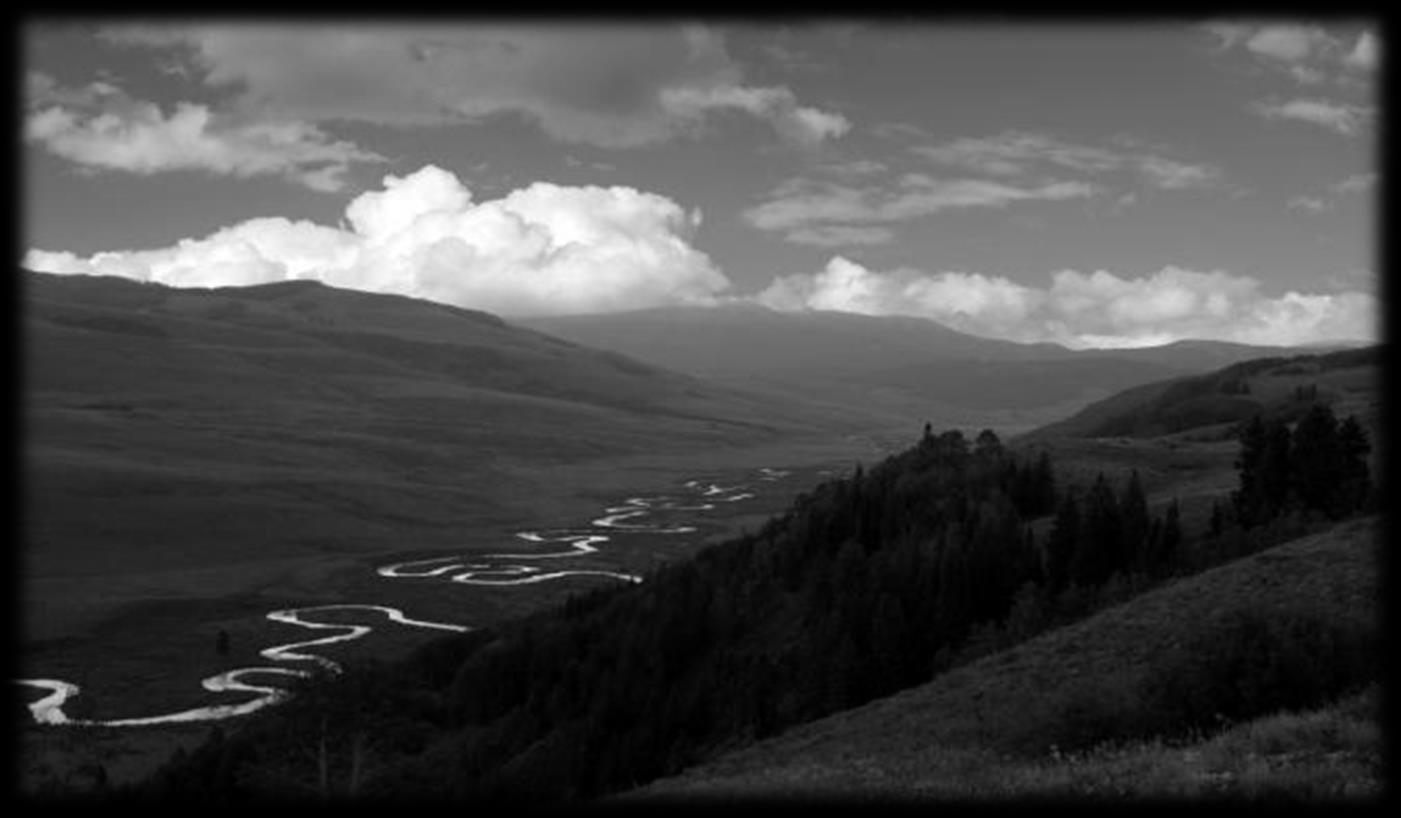
An exploration into nature and its relationship to the body, mind and spirit of man.
24
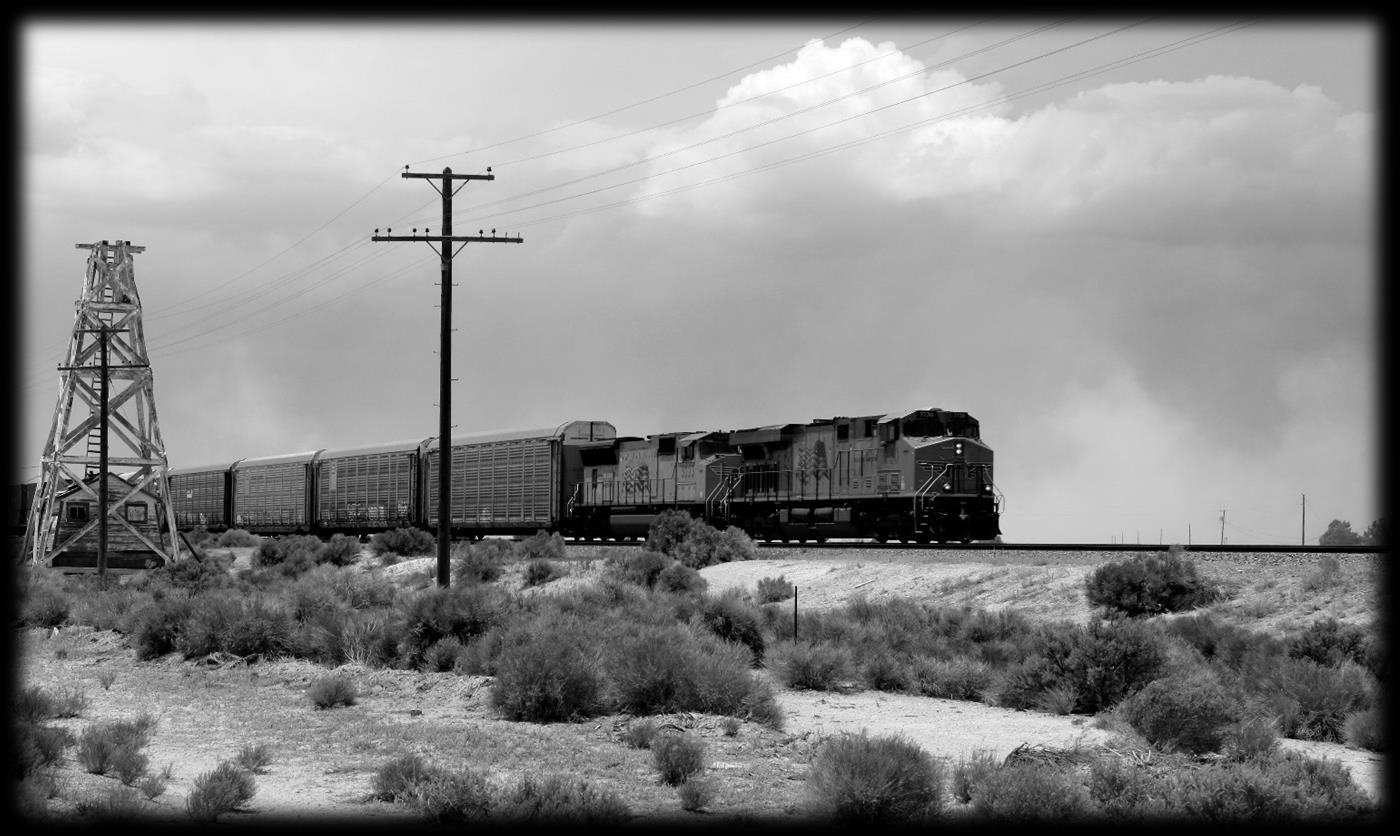
Part Three, The Spirit of Adventure
In Part Three we look at organizing and executing an adventure fitness event for a group of participants. This part of this book is a teaching section for personal trainers, wilderness and outdoor guides, and adventure fitness activity coordinators.
An exploration into nature and its relationship to the body, mind and spirit of man.
Traveling at the Speed of Lightness 25
Traveling at the Speed of Lightness
Part Three, The Spirit of Adventure
Many people have never had an outdoor adventure, but would like to try an adventure fitness activity. Personal trainers, wilderness and outdoor guides, and adventure fitness activity coordinators are professionals that organize and supervise outdoor adventure fitness activities for individuals, groups, or organizations and corporations. In this section of this book we look at how to organize and to execute an adventure fitness activity and event.
Adventure fitness activities conducted in outdoor recreational or wilderness areas are becoming increasingly popular weekend and vacation activities for many people and there is a need for well trained professionals to organize and to lead these activities and to ensure that the participants are safe and that they enjoy their adventure fitness activity.
An adventure fitness activity is normally an event conducted in an outdoor recreation or wilderness area. Adventure fitness activities may incorporate a large variety of fitness related or outdoor activities including:
Hiking/backpacking
Running
Biking
Kayaking/canoeing/rafting
Climbing
Swimming
Horseback riding
Off road Jeep or ATV
Orienteering
Survival
Camping
Adventure fitness activities may involve a single activity such as running or may involve several combined activities like you see in a typical triathlon that includes swimming, biking, and running. For example, an adventure fitness activity conducted in a desert wilderness area might incorporate running and climbing or hiking, camping, and survival skills.
In the following material we are going to discuss how to plan and organize an outdoor recreation or wilderness adventure fitness activity. We will begin by looking at the following organizational factors:
1. Initial planning
2. Designing the adventure/activity
3. Handouts, legal forms, and paperwork
Step One, Initial Planning
In our initial planning we want to define the concept, the goals, and the objectives of the adventure fitness activity. The ‘concept’ of the adventure fitness activity is defined as what do we want (or what does the group want) our idea or the theme of our adventure to be? There are, of course, several factors that help to define our idea or theme and those factors include our location and the environment or setting that will contain our
An exploration into nature and its relationship to the body, mind and spirit of man.
26
Traveling at the Speed of Lightness
outdoor recreation or wilderness activities, what is the experience level and technical ability of the participants, what are the physical abilities or the physical condition of the participants, and finally what resources in terms of equipment are available for the activity?
The available environment and its natural features and characteristics is a determining factor in making decisions regarding what sports, fitness, or outdoor activities are possible. In natural areas with water resources swimming or kayaking may be a possibility, in areas without water but with strong natural features such as boulders, cliffs, or mountain terrain the inclusion of climbing activities may be allowed. The climate of the available environment is also a determining factor. For example, what is the availability of water, is the area very hot and dry, is the area wet and swampy, is the terrain very slippery or cold? All of these climate factors also define the scope, the limits, and/or the extent of possible adventure fitness activities.
Determining the experience level and/or the technical abilities of the individual or the group participants is a critically important factor in assuring both the safety and the enjoyment of the participant(s). It is not wise, safe, or fun to push individuals or group participants significantly beyond their capacity. Capacity is based upon the participants experience and technical abilities in a recreational or wilderness adventure fitness activity. Pushing a participant or participants beyond their abilities can result in injuries and very unhappy clients.
The cardinal rule in adventure fitness is that everyone is safe and everyone has fun.
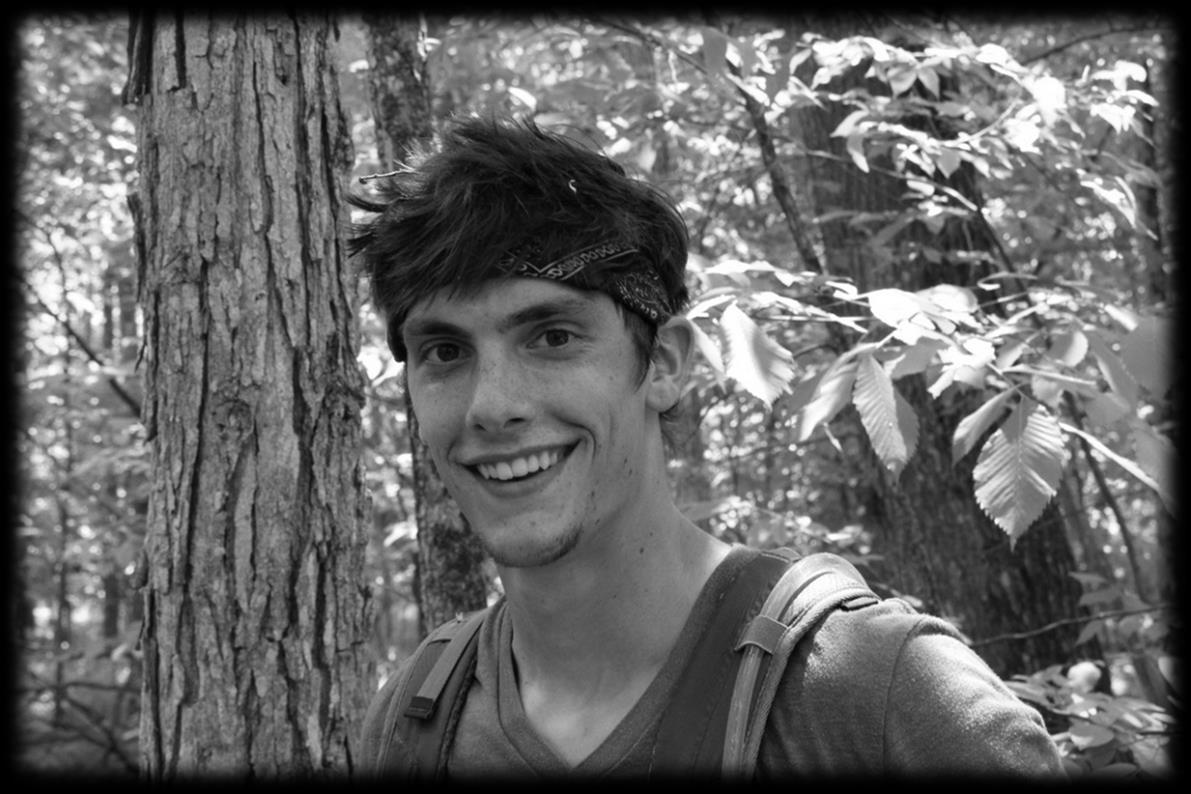
An exploration into nature and its relationship to the body, mind and spirit of man.
27
Jordan Muschiana deep in the swamp
Closely related to the issue of experience and technical ability is the physical ability and condition of the participant(s). For example, you may be working with a group of deconditioned individuals or a group with special needs related to their physical condition, a handicap, or a disability. It is the job of the trainer to appropriately assess the physical condition and abilities of the program participants and to design adventure fitness activities that are safe and enjoyable for everyone. If you are working with a group in which the physical abilities and condition of the participants are unequal then you might consider assigning those with greater ability, and who are in better physical condition, with more responsibilities for the activity, such as making an individual with certain needed skill sets a team leader.
As you are defining your concept or theme the equipment resources available to you is another determining factor in terms of what activities you can engage in. If you don’t have bikes you cannot include cycling in the activity and if you don’t have kayaks, kayaking will not be part of your fitness adventure.
Step Two, Designing the Adventure Activity
Once you have defined the parameters of your concept, based upon the elements outlined above, you are ready to proceed with the more detailed planning stages of your adventure fitness activity.
Since you have now defined what is possible within the available environment, in terms of the terrain and climate and what your program participants are actually capable of doing, you can now determine exactly what your fitness adventure event can include in terms of activities. The scope of the activities to be included, the environment, and the duration of the activities or event are all factors that affect the next detailed planning stages.
In the detailed planning stage you need to determine and to outline the following:
1. The scope of the activity/event.
2. The length or the duration of the activity/event.
3. The location of the activity/event.
4. The equipment needed for the activity/event.
5. The supplies needed for the activity/event.
6. Special needs and requirements related to the terrain and climate.
7. Special needs and requirements related to the participants.
8. Written instructions, checklist, directions, maps, compass, and/or GPS.
9. Emergency communications, supplies, equipment, instructions, and emergency plan.
10. Leadership and management structure for the activity/event.
The Scope of the Activity/Event –
The scope of the Activity or the event describes the need to define the activities that the program participant(s) will engage in. For example, will they be running, hiking, backpacking, or camping? The scope of the activities and the kind of activities will determine what gear, supplies, and equipment, as well as, what emergency training, supplies, and equipment will be required for the outdoor adventure fitness program.
An exploration into nature and its relationship to the body, mind and spirit of man.
Traveling at the Speed of Lightness 28
The Length or the Duration of the Activity/Event –
The distance of travel and the duration of the activity of the event will define the amount of supplies, such as food and water that will be needed. In addition, overnight activities and events require significant planning in terms of equipment like sleeping bags and tents.
The Location of the Activity/Event –
The location of the event in terms of environment, elevation, terrain, and climate characteristics is a major aspect in determining many factors related to your planned activities, but specifically in regards to gear, supplies, and equipment. Each type of terrain whether wet and swampy or hot, rocky, and dry demands different types of gear, supplies, and equipment.
The Equipment Needed for the Activity/Event –
The number of participants, the scope of the event, the location of the event, and the duration of the event are all determining factors regarding what equipment you will need for the activity or event.
The Supplies Needed for the Activity/Event –
The number of participants, the scope of the event, the location of the event, and the duration of the event are all determining factors regarding what supplies, and what quantities of supplies, you will need to have available for the program participant(s).
Special Needs and Requirements Related to the Terrain and Climate
Organizing an adventure fitness event as a run from rim to rim across the Grand Canyon will require special planning related to water supplies, as well as, planning for dehydration and heat stroke. Organizing a cross country overnight skiing trip in the Michigan Upper Peninsula requires proper clothing, food supplies, shelter, and preparations related to hypothermia and frostbite.
Special Needs and Requirements Related to the Participants -
As a part of the detailed planning stage of the event a physical assessment form and physical/medical evaluation should be completed on each program participant. Some clients or groups may have special health care needs, handicaps, or disabilities. Even healthy participants, without special needs, handicaps, or disabilities will present with different physical abilities and capacities and the activities and events need to be planned around these physical requirements and/or special needs.
Written Instructions, Checklist, Directions, Maps, Compass, and/or GPS –
All adventure fitness program participants, team leaders, and organizers should be provided with written instructions, a checklist, written directions, printed maps, a compass, and/or GPS devices. An orientation should be completed by the program organizers, leaders, and program participants during which all aspects of the activity and event are discussed and outlined. Course directions, maps, major landmarks and topographical
An exploration into nature and its relationship to the body, mind and spirit of man.
Traveling at the Speed of Lightness 29
-
features should be learned, compass directions should be reviewed, and the use of the GPS device should be practiced. During the orientation all questions regarding the activity and event should be answered and all feedback and suggestions should be welcomed and discussed.
Emergency Communications, Supplies, Equipment, Instructions, and Emergency Plan –
The best method of dealing with emergencies is to have planned for them in advance and then to execute that plan if and when it is needed. Emergencies might include injury or trauma, sickness or illness, heat stroke, exhaustion, or hypothermia, insect or snake bites, loss of important equipment, attacks by large predators such as a bear or a mountain lion, adverse changes in weather conditions, and/or not being able to locate a water supply that you were depending upon or the spring or water tank is dry and water is unavailable. Anything can and often does happen so expect the unexpected. Every adventure fitness activity and event needs a written emergency plan and instructions, and this might include the phone number of the local sheriff’s department. Every participant and team leader must be provided with a copy of the emergency plan. You also need to have emergency communications in place and this might include cell phones, two way radios, and CB radio communication ability. A first aid kit along with emergency supplies suited for the terrain and climate also need to be a required part of the activity and event. A part of the overall emergency plan should be written instructions (and a map or GPS coordinates) regarding what to do and where to go should it become necessary that the activity is terminated and the group(s) need to reassemble in order to depart an area or for emergency extraction by emergency responders.
Leadership and Management Structure for the Activity/Event -
Every adventure fitness event must have a clear leadership structure and all participants should be informed in writing and verbally regarding the leadership structure. Typically, the organizational structure for larger group events (four or more participants) includes an overall chief leader, head leader/referee, team leaders for each team, special assignment leaders, and a two person buddy system. The chief leader is responsible for the overall activity and event and important decisions related to emergencies, the head leaders accompany the groups of teams into the field and serve as advisors and referees during competitions, the team leaders are responsible for organizing, directing and guiding their teams, special assignment leaders might include individuals who have been assigned tasks such as navigation or first aid. The two person buddy system is used to make certain that at every level of the organizational structure attention is paid to ensure the safety and wellbeing of all program participants. Even well-organized events have suffered injuries or deaths because the head leader or team leaders were too busy to notice that they had lost a participant. The adventure fitness leadership structure is as follows:
An exploration into nature and its relationship to the body, mind and spirit of man.
Traveling
Lightness 30
at the Speed of
1. Chief leader 2. Head leader/referee 3. Team leaders 4. Special assignment leaders
Traveling at the Speed of Lightness
Step Three, More Practical Aspects – Handouts, Legal Forms and Paperwork
As was previously mentioned, it is important that an activity and event orientation be held and that instructions be provided to each leader and the participants both verbally and in writing, and when called for, specific technical instructions be provided. Technical instruction might include canoe, kayaking, rafting, or climbing instruction.
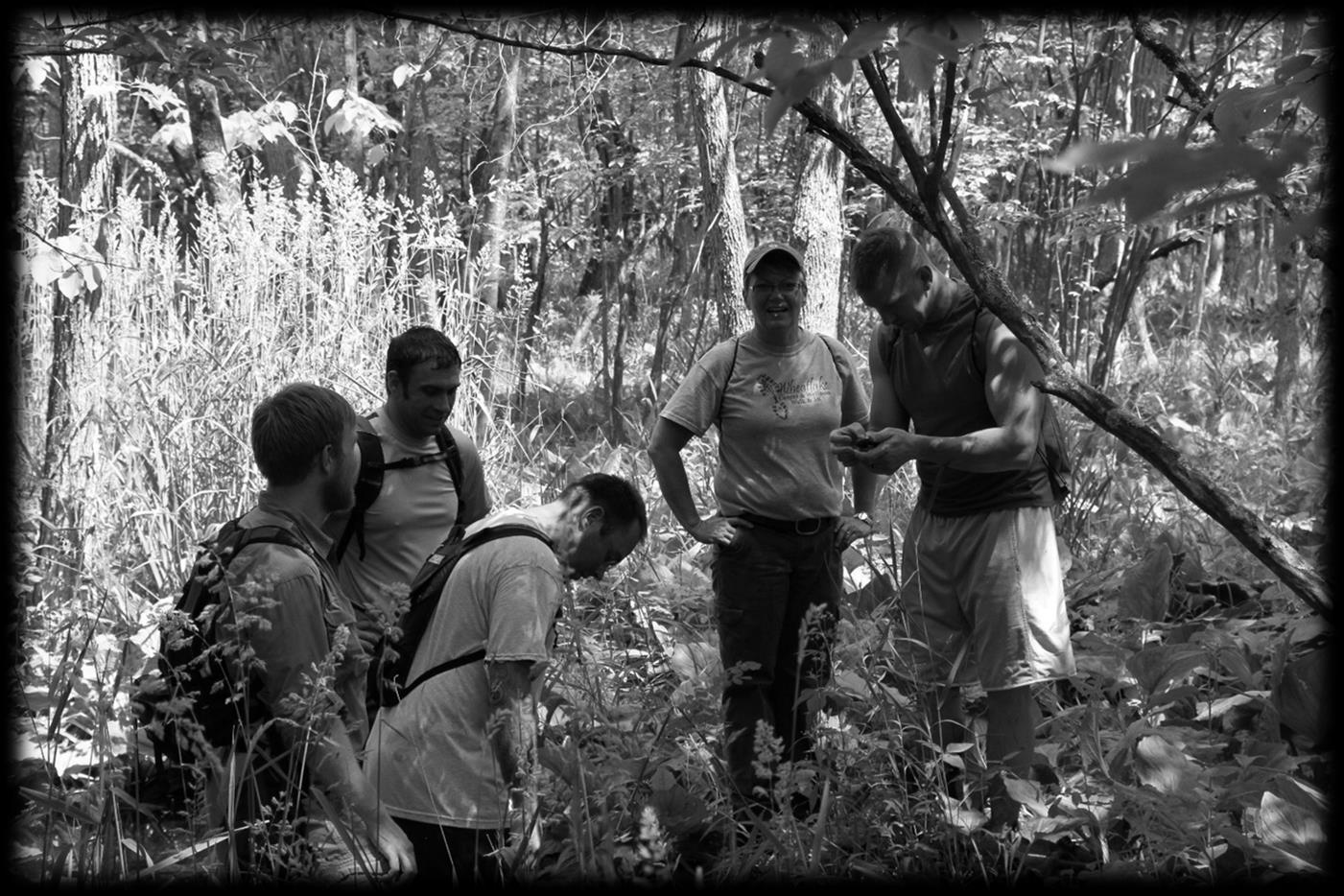
Are we there yet? (Checking the GPS) Sean Butterworth, Head Leader and Referee (On far Left)
The organizational paperwork for an adventure fitness program includes:
1. Informed consent and release form.
2. Physical assessment and/or medical release.
3. Emergency contact information.
4. Description of the event – who, what, when, and where.
5. Event checklist to include equipment and supplies.
6. General instructions, rules, and guidelines.
7. Emergency plan and instructions.
8. Maps and GPS coordinates.
An exploration into nature and its relationship to the body, mind and spirit of man.
31
Traveling at the Speed of Lightness
9. Emergency numbers and contact information.
10. Adventure fitness and activity competition form.
11. Acknowledgement release that participants received and read all written information.
Informed Consent and Release Form –
I acknowledge that I have been fully informed of the risks, including risk to life and limb, which I am voluntarily assuming as a participant in this adventure fitness activity and event. By my signature to this form I assume complete responsibility for my active participation in this event and I absolve BHA Adventure Fitness of all legal responsibility in the case of an accident, injury, or death to myself.
Date: Signature:
Physical Assessment/Medical Release 1 –
By my signature to this form I am informing BHA Adventure Fitness that I have been cleared by my medical physician to fully participate in this adventure fitness activity.
Date: Signature:
Physical Assessment/Medical Release 2 -
By my signature to this form I am informing BHA Adventure Fitness that I have been cleared by my medical physician to participate in this adventure fitness activity with the following limitations:
(Note any limitations here)
Date:
Signature:
In case of emergency please contact: (please list the name, address, and all possible phone numbers for your emergency contact person)
Description of the Event – Who, What, When, and Where -
32
exploration into
mind and spirit of man.
An
nature and its relationship to the body,
Traveling at the Speed of Lightness
This adventure fitness event is a competitive hike/run through Seidman Park, Ada, Michigan (a Kent County Park area). The participants are organized into two competing groups each with a team leader and two head leaders as referees and event supervisors. The two teams are provided with an orientation briefing regarding the event and pre-programmed GPS devices. Using the GPS devices the two teams compete to follow the GPS coordinates and to complete assignments at three GPS locations. The first team to complete the course and the assignments wins the completion and earns eternal glory. (In addition to this information, add the date and time span of the event)
One Day Event Checklist to Include Equipment and Supplies.
Packing List:
Good attitude
A buddy/travel in groups
Day Backpack
Warm clothing/layers/gloves/jacket/hat/extra shirt
Hiking shoes/muck boots/rubber boots/dry socks
Basic first aid kit
Bug spray
Sunscreen
Sunglasses
Flashlight
Extra batteries for all devices
Pen and notebook
Small book or something to read or to draw with/on
Camera
Watch
Cell phone
Maps/Compass/GPS
Binoculars
Plenty of water and/or juice (for the day)
Snacks or quick meals (for the day)
Toilet paper
Plastic bag for garbage/do not leave anything behind
Bring this checklist
What else? (List it here)
An exploration into nature and its relationship to the body, mind and spirit of man.
33
General Instructions, Rules, and Guidelines -
Safety and Rules:
Take your time, be safe, and think before you act.
1. Everyone is safe.
2. Everyone comes back alive.
3. No one is left alone.
4. No one is left behind.
5. No one gets lost.
6. You must stay together and to travel as a team.
7. Stay off of the marked trails and travel cross country, the time that you follow marked trails will be deducted from your overall time and score.
8. The entire team must arrive at the GPS locations and complete the assignment before the team can move on to the next GPS location.
9. Follow the instructions of your leaders.
10. Don’t leave anything behind, “Leave no Trace”.
11. Respect nature, the animals, and the vegetation in the park.
12. If your group becomes lost or disoriented in the park ask your head leader/referee for help.
13. If anyone has a health or safety problem tell your team, head, and chief leaders immediately.
14. Follow your GPS device and coordinates to the pre-designated locations in the proper sequence as indicated by the GPS unit.
15. Do not visit the assigned locations out of sequence.
16. Complete the assignments on your teams written instruction sheet.
17. Deviate around obstructions and re-orient your direction of travel with the GPS unit.
18. Avoid entry into and direct travel through deep mud and swamps.
19. The head leaders/referees will disqualify teams that cheat or that do not follow the rules.
Emergency Plan and Instructions -
In case of a health or medical emergency the adventure fitness activity and event will be terminated and the teams will either return to the starting point, the nearest park exit and pick up point, or (and depending upon the seriousness of the emergency) may need to wait in place for emergency responders to arrive to extract the injured or ill person(s). All teams will be provided with cell phones and emergency two way radios. Teams will remain in constant contact with the chief leader via two way radio. In the event of a health or medical emergency the first call will be to 911 and the second call will be to inform the chief leader of the nature of the health or medical emergency and of the actions taken. The remaining team members, those not needed to assist a team member either to the starting point or to the nearest pickup point, will terminate the adventure fitness activity and event and will return to the starting point to debrief and depart the area. Never hesitate, when there is a serious health or medical problem, to call for immediate help. The head leaders/referees will be the decision makers regarding emergency calls and actions on the ground and special assignment leaders with medical training and credentials will assist and advise the head leader regarding any needed medical and emergency response.
Lightness 34
Traveling at the Speed of
An exploration into nature and its relationship to the body, mind and spirit of man.
Traveling at the Speed of Lightness
Maps and GPS Coordinates –
All teams will be provided with an area map, a GPS device that has been pre-programmed with coordinates, and a compass. Before you begin the adventure fitness activity and event attempt to get a sense of direction pertaining to the general directions of north, south, east and west, and use nearby roads, major trails, landmarks, and waterways to assist with your orientation within the park.
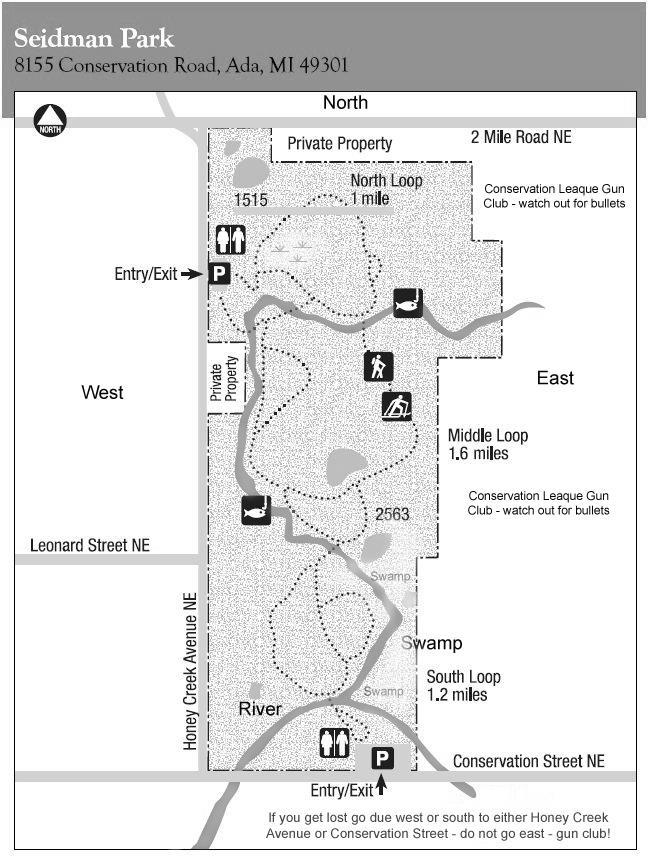
Emergency numbers and contact information –
In case of a health or medical emergency, and with the advice of the head leader/referee, call 911. Depending upon the emergency you will be advised to either remain in place or to travel to the nearest pick up point. For non-life threatening or non-medical emergencies call the Kent County Sheriff’s office at 616-632-6111.
An exploration into nature and its relationship to the body, mind and spirit of man.
35
Traveling at the Speed of Lightness
Adventure Fitness Activity – Seidman Park Michigan
Team One_________________________________________________
Rules:
1. Everyone stays safe and has fun.
2. Go to the waypoints in the order assigned.
3. You have 2 hours to complete this adventure.
4. Avoid the main park trails and use the GPS to guide you.
5. Your referee will add 1 minute to your total team time for every minute that you spend on a main park trail.
6. Answer the questions at each waypoint.
7. If you use the main park trails or cheat minutes will be added to your return time.
8. The first team to return to the starting point wins (after computing any penalty time).
Waypoint ____
What is located at this waypoint?
Waypoint ____
What is located at this waypoint?
Waypoint ____
What is located at this waypoint?
Waypoint ____
Finish line Congratulations!
Team Two -
36
exploration into nature and its relationship to the body, mind and spirit of man.
An
–
Adventure Fitness Activity
Seidman Park Michigan
Traveling at the Speed of Lightness
Rules:
1. Everyone stays safe and has fun.
2. Go to the waypoints in the order assigned.
3. You have 2 hours to complete this adventure.
4. Avoid the main park trails and use the GPS to guide you.
5. Your referee will add 1 minute to your total team time for every minute that you spend on a main park trail.
6. Answer the questions at each waypoint.
7. If you use the main park trails or cheat minutes will be added to your return time.
8. The first team to return to the starting point wins (after computing any penalty time).
Waypoint _
What is located at this waypoint?
Waypoint ____
What is located at this waypoint?
Waypoint ____
What is located at this waypoint?
Waypoint ____
Finish line
Congratulations!
Acknowledgement Release that Participants have Received and Read all Written Information -
I acknowledge that I have been provided with the following information (see list below) and that I have received additional verbal instruction and hands on training pertaining to the BHA Adventure Fitness activity and event.
An exploration into nature and its relationship to the body, mind and spirit of man.
37
Traveling at the Speed of Lightness
1. Informed consent and release form.
2. Physical assessment and/or medical release.
3. Emergency contact information.
4. Description of the event – who, what, when, and where.
5. Event checklist to include equipment and supplies.
6. General instructions, rules, and guidelines.
7. Emergency plan and instructions.
8. Maps and coordinates.
9. Emergency numbers and contact information.
10. Adventure fitness and activity competition form.
11. Acknowledgement release that participants have received and read all written information. Date: Signature:
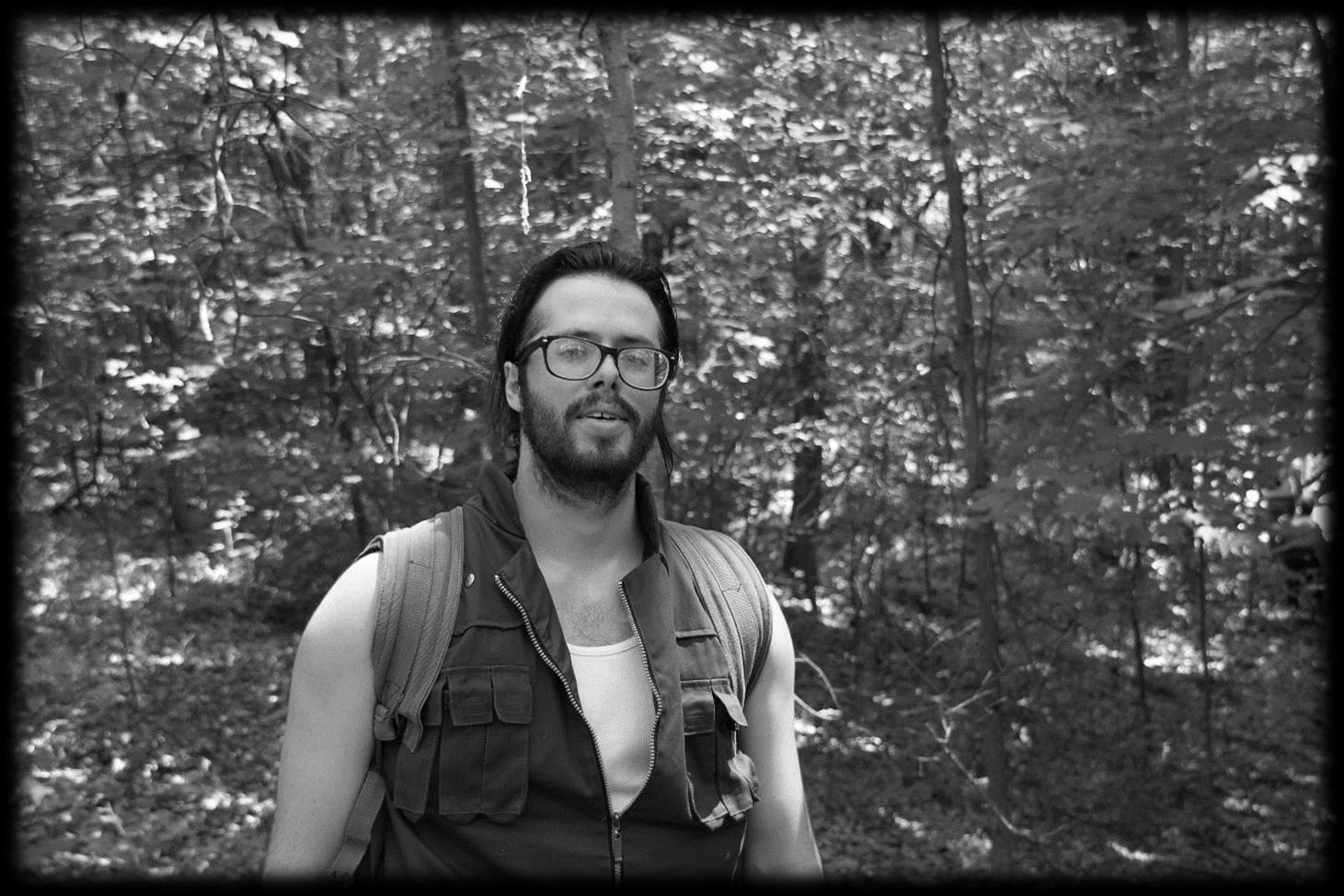
38
An exploration into nature and its relationship to the body, mind and spirit of man.
Head Leader and Referee, Dan Muschiana
Other related books by this author -
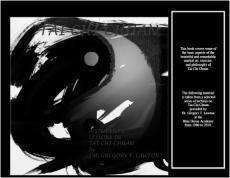





An exploration into nature and its relationship to the body, mind and spirit of man.
Speed
Lightness 39
Traveling at the
of
Traveling at the Speed of Lightness
An exploration into nature and its relationship to the body, mind and spirit of man…
Dr. Gregory T. Lawton (Doc) is an avid wilderness and backcountry explorer. Doc loves to hike, bike, kayak and free dive and swim and uses these adventures to write stories and poetry, as well as to take nature and landscape photographs.
Dr. Gregory T. Lawton has studied and trained in Asian religion, philosophy and martial arts such as Aikido, Jujitsu, Kenpo, and Tai Chi Chuan. He is an 8th degree black belt in Kosho Ryu Kenpo Jujitsu and was awarded the title of Yudansha Taigu.
Dr
. Lawton’s main and most noted Asian martial art instructor was Professor Huo Chi-Kwang. Professor Huo was a renowned Chinese scholar, artist, and calligrapher who served as Taiwan's ambassador to France and he was a personal friend of Pablo Picasso.
Dr. Lawton has been a member of the Baha’i Faith since 1970 and embraces the Faith’s principles related to the promotion of world unity and peace.
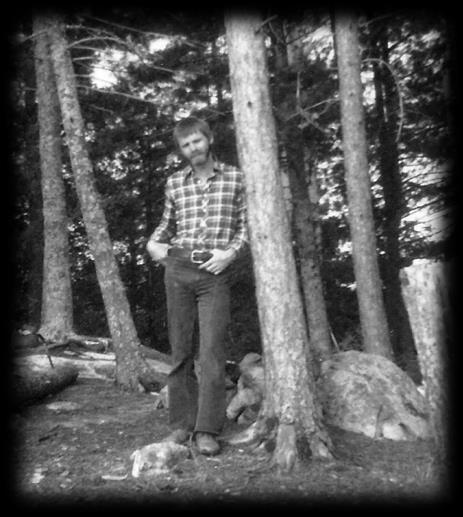
American Health Source
Dr. Gregory T. Lawton
Copyright, June 2013
Traveling at the Speed of Lightness 40
exploration into
and its relationship to the body, mind
An
nature
and spirit of man.



























